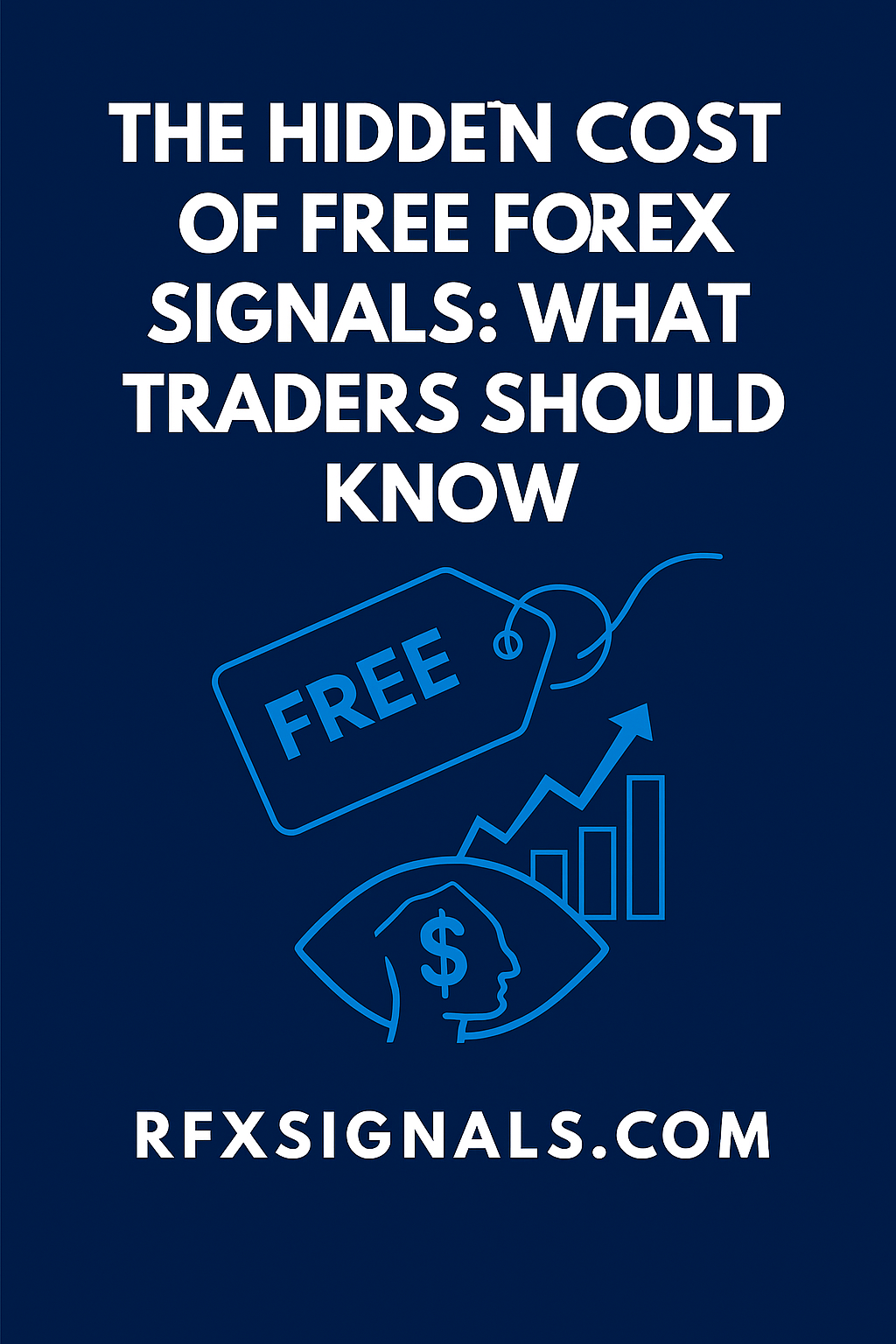
The Hidden Cost of Free Forex Signals: What Traders Should Know
By RTech RFX Signals ·
Free Forex signals are tempting, but they often carry hidden costs — financial, psychological and opportunity-based. This guide explains how to evaluate free signals, calculate their true cost, and choose safer alternatives.
Introduction — why “free” can be expensive
At first glance, free Forex signals look like a no-risk shortcut to profits: someone else does the analysis, you copy trades, and you keep the gains. But in FX, the difference between theory and execution is wide. Free signals often omit execution assumptions, real costs, or the edge’s fragility. The result? Traders who follow free alerts may underperform, lose money, or develop bad trading habits. This article breaks down the hidden costs and shows how to evaluate any signal provider — free or paid.
1. Transaction costs & slippage that aren't disclosed
Many free signals present entry and exit prices that assume perfect fills. Real trading includes spreads, commissions, and slippage — especially for high-frequency signals or during news. A signal that looks profitable on paper can be unprofitable after realistic costs.
- Spread leakage: Signals often assume mid-market or ideal spreads; retail spreads vary by broker and time of day.
- Slippage: Market moves between alert and execution — common during news or illiquid hours.
- Commissions & swaps: These recurring costs are sometimes ignored in published performance tables.
2. Poorly-defined trade management
Free signals frequently list only entry and take-profit levels, but full trade management requires stop-loss rules, partial exit plans, position sizing and contingency for market events. Without these, traders may hold losing trades too long or overtrade winners, eroding returns.
What to check
Always look for documented rules: exact stop levels, max holding time, trade weight (lot size), and whether the signal is directional or hedge-ready. If it's missing — treat the signal with suspicion.
3. Survivorship & selection bias in advertised results
Providers often publish cherry-picked snapshots: only the best trades, or only recent winners. This creates survivorship bias that makes performance look better than reality. Ask for full historic logs with timestamped entries that include losing trades.
4. Latency and execution differences
If the provider and you are in different timezones or use different brokers, the execution price can differ substantially. For scalping signals, even a few hundred milliseconds matter. Some providers use institutional feeds — retail clients cannot replicate those fills.
5. Psychological costs and overreliance
Copying signals without understanding them reduces learning. Traders can become dependent, stop developing discipline, and panic when signals stop working. Free services may encourage frequent copying with little education — that breeds bad habits and erosion of trader skill.
6. Conflicts of interest and hidden monetization
Free signal providers may monetize via broker referral kickbacks, advertising, or selling aggregated trade lists. Some intentionally route followers to brokers where the provider receives rebates — which might explain certain trade timing. Transparency matters.
7. Quality & sustainability of edge
A profitable signal needs an edge (information, timing, or execution advantage). Many free systems are backtests optimized on historical data (data-snooping) and won't survive market regime changes. Sustainable edges require ongoing research and adaptation — usually not free.
How to evaluate free signals — a practical checklist
- Ask for full trade logs: timestamped entries, entries/exits, slippage and realized P&L after costs.
- Request a demo run: copy trades into a demo account for 30–90 days and measure real fills.
- Confirm trade management: stops, max drawdown limits, and position sizing rules are specified in writing.
- Calculate true returns: after spreads, commissions and realistic slippage per your broker.
- Search reviews & community feedback: reputable forums and independent trackers (be skeptical of reviews on the provider’s own page).
- Understand motivation: how does the provider make money? Affiliations with brokers? Subscription upsell?
Alternatives to blind copying
If you like free signals but want to reduce risk, consider:
- Educational signals: providers that explain trade logic and why they enter/exit.
- Filtered copying: only copy signals that meet your risk profile (e.g., at least 1:1 reward:risk and max drawdown limit).
- Partial sizing: use smaller lot sizes or scale-in to test an unknown strategy live.
- Paper trade first: replicate for months in a demo account under your broker to see true execution quality.
Red flags every trader should watch for
- Opaque performance reports without downloadable logs
- Guaranteed returns, especially large ones
- Pressure to upgrade to a paid plan to “see real results”
- No mention of risk or worst-case drawdown
Case study (illustrative)
Imagine a free channel that posts 20 scalps a week with advertised 70% win rate and average 15 pip winners. After measuring real fills on your broker, you discover average slippage/extra spread erodes 10 pips per trade, and commissions remove another 6 pips — converting a promising stream into a small loss. Without detailed logs and demo verification, this loss is easy to miss.
Conclusion — protect capital first
Free signals can be a useful learning tool if treated as education rather than a turnkey money machine. Always verify with real fills, demand documented rules, and only risk money you can afford to lose while testing. The cheapest signal is worthless if it destroys your account through hidden costs or poor risk controls.
Want signals that show full logs & execution details?
We publish timestamped historic trade logs, cost-adjusted backtests, and demo-ready packages so you can verify performance yourself before going live.
Further reading (authoritative outbound links)
For deeper background on trade execution and realistic backtesting, see resources like Investopedia, BabyPips, and academic articles on realistic trading simulations.